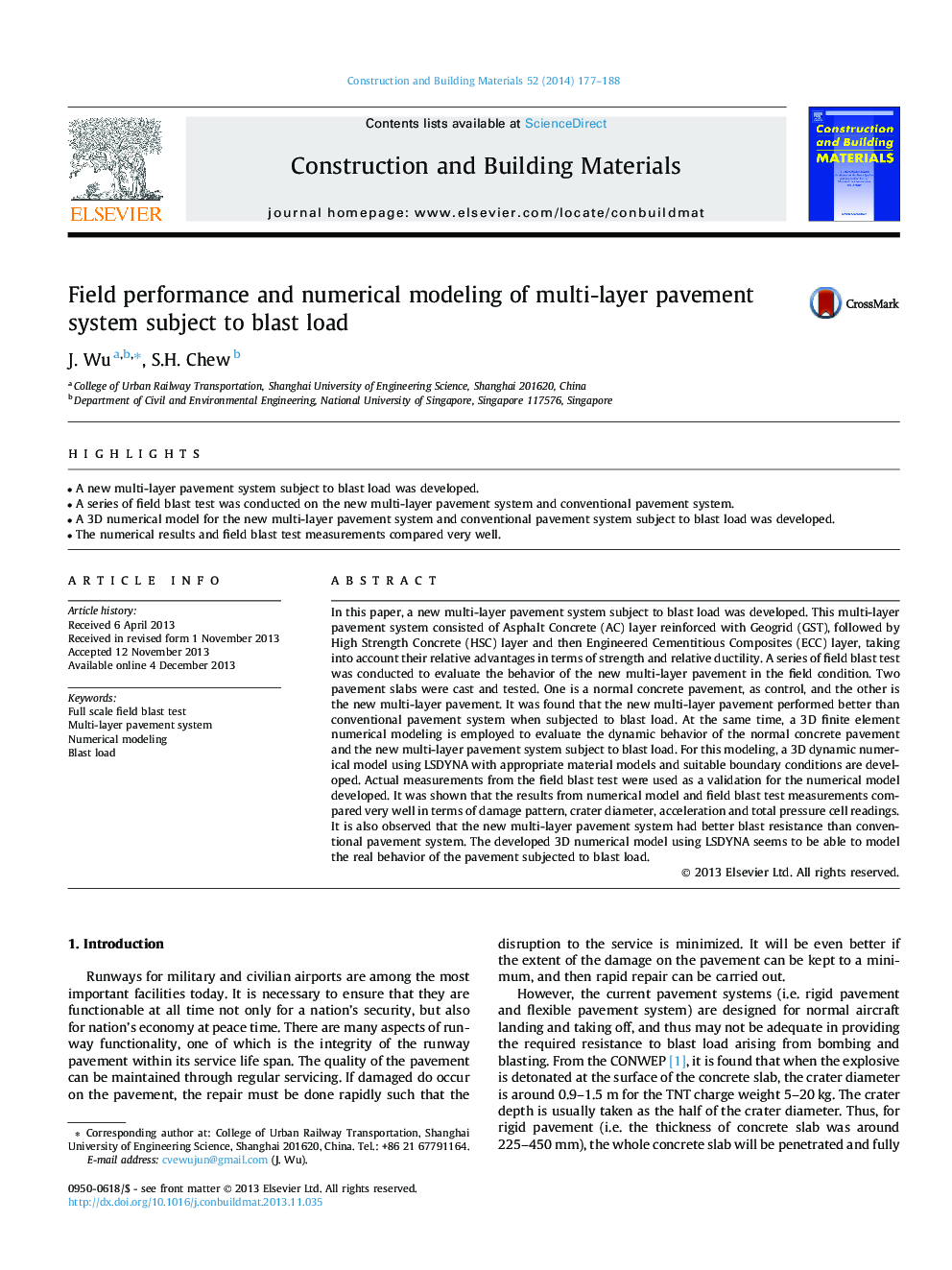| Article ID | Journal | Published Year | Pages | File Type |
|---|---|---|---|---|
| 6724305 | Construction and Building Materials | 2014 | 12 Pages |
Abstract
In this paper, a new multi-layer pavement system subject to blast load was developed. This multi-layer pavement system consisted of Asphalt Concrete (AC) layer reinforced with Geogrid (GST), followed by High Strength Concrete (HSC) layer and then Engineered Cementitious Composites (ECC) layer, taking into account their relative advantages in terms of strength and relative ductility. A series of field blast test was conducted to evaluate the behavior of the new multi-layer pavement in the field condition. Two pavement slabs were cast and tested. One is a normal concrete pavement, as control, and the other is the new multi-layer pavement. It was found that the new multi-layer pavement performed better than conventional pavement system when subjected to blast load. At the same time, a 3D finite element numerical modeling is employed to evaluate the dynamic behavior of the normal concrete pavement and the new multi-layer pavement system subject to blast load. For this modeling, a 3D dynamic numerical model using LSDYNA with appropriate material models and suitable boundary conditions are developed. Actual measurements from the field blast test were used as a validation for the numerical model developed. It was shown that the results from numerical model and field blast test measurements compared very well in terms of damage pattern, crater diameter, acceleration and total pressure cell readings. It is also observed that the new multi-layer pavement system had better blast resistance than conventional pavement system. The developed 3D numerical model using LSDYNA seems to be able to model the real behavior of the pavement subjected to blast load.
Keywords
Related Topics
Physical Sciences and Engineering
Engineering
Civil and Structural Engineering
Authors
J. Wu, S.H. Chew,
